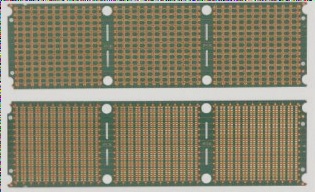PCB Soldering Guide for Beginners
If you’re new to soldering and looking to solder a potentiometer on a PCB, you’ve come to the right place. Soldering can seem daunting without prior experience, but we’ve broken down the process into 7 simple steps for beginners. In this guide, you’ll also learn about the essential tools needed for soldering and important safety precautions to prevent any mishaps.
What is PCB Soldering?
PCB soldering involves joining electrical components on a printed circuit board. This process helps connect small metallic components on the PCB surface, making it crucial for electronic assembly.
The soldering process is divided into soft soldering and hard soldering on PCB. Soft soldering is used for connecting small materials, while hard soldering joins different metals together on the PCB board.
Essential tools for soldering include a soldering iron, solder, printed circuit board, and the materials to be soldered. The soldering iron melts the solder, which acts as a bonding material for the components on the PCB.
There are various types of solder available, but the basic solder is a metal alloy of tin or lead with brass, known for its low melting point. When heated, the solder turns into a glue-like substance that solidifies to form a strong bond between components.
Equipment Needed to Solder Potentiometer on PCB
When soldering a potentiometer on a PCB, you’ll require specific equipment to ensure a successful soldering process. Here are the essential tools:
1. Soldering Station
A soldering station is necessary for soldering electrical components on the PCB. It houses the soldering iron, which is crucial for carrying out the soldering tasks effectively.
2. Solder
Solder is an alloy with a low melting point that is used to join metallic pieces together during the soldering process.
3. Soldering Iron
- The soldering iron tip resembles a pencil lead and is used to melt the solder by providing heat.
- The Wand of the soldering iron is held to protect the user from the heat generated.
- A wick made of copper wires is used for removing excess solder.
4. Solder Flux
Solder flux is essential for cleaning components during the soldering process, preventing rust and ensuring a secure connection.
5. Printed Circuit Board (PCB)
The PCB serves as the platform for soldering various components and is where the soldering tasks are carried out.
6. Additional Tools
Essential Tools for Soldering a Potentiometer on PCB
- Stripping wires
- Bench-top fume extractor
- Wire cutter
- Soldering paste
Safety Measures for Soldering
- Wear safety spectacles to protect your eyes
- Work in a well-ventilated area to avoid inhaling harmful chemicals
- Keep the soldering iron in the solder station when not in use
- Understand how to solder a potentiometer on PCB safely
Step-by-Step Guide: How to Solder a Potentiometer on PCB
1. Tinning
Clean components and potentiometer leads with alcohol or solder flux. Apply a thin solder layer (tinning) to prevent oxidation.
2. Warm up the Soldering Iron
Set the temperature to 372°C. Apply solder to the tip, wipe off excess flux.
3. Prepare the Surface
Clean the board surface to remove debris using a pad or acetone cleaner.
4. Position Components
Start with smaller components first. Bend and place leads into the PCB holes.
5. Apply Heat
Apply a thin layer of solder to the iron tip to transfer heat. Heat the joint by placing the iron on the board and leads.
6. Solder the Joint
Touch solder strip, pad, and lead to create a heap shape. Draw the iron back once soldered.
7. Ensure a Safe Finish
Let the joint cool without tilting or shaking to maintain its shape.

How to Solder a Potentiometer on a PCB
Once the joint has completely cooled, inspect the board and trim the potentiometer lead using cutters above the joint.
Afterward, clean the PCB surface to reveal your finished PCB with the newly soldered potentiometer.
Final Steps
This guide simplifies the soldering process into seven easy steps for soldering a potentiometer onto a PCB. By following these steps, you can complete the task smoothly and efficiently.
Additionally, we have included safety precautions to ensure a secure soldering process. With these instructions, you can confidently solder your potentiometer onto the PCB without any complications.



